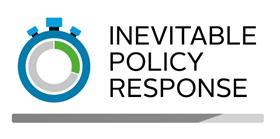
The world is water stressed, and getting more so. 1.7 billion people live in river basins currently facing extreme water stress in which aggregate demand exceeds sustainable recharge (2030WRG 2017). Population and economic growth drive dramatically increasing water demand, largely from agricultural production, while supply becomes ever more volatile, leading to a doubling of the number of people exposed to water scarcity in the next twenty years alone. Economic assets are also at risk.
The Inevitable Water Finance Response (PDF)
Current projections of water stress suggest long term growth rate declines of up to six percentage points due to water scarcity-driven losses in agriculture, health and property (World Bank 2016). Entire regions, including large swaths of Central and East Asia, the Middle East, and North Africa, face particular risk.
Increasing stress is intensified by the net zero transition, which will amplify risks and opportunities for investors. Net zero transition policies will add to these underlying pressures by incentivizing large changes in land use. Reclamation and expansion of forested land will further concentrate agricultural activity in productive areas. Bioenergy crop production will expand water demands in agriculturally productive areas already facing the most water stress. Agricultural productivity improvement, largely in developing countries and through improved irrigation schemes, is also a crucial component of a zero-carbon transition in the land system: The Forecast Policy Scenario of the Inevitable Policy Response project estimates that aggregate global productivity increases of 58% will be driven by climate action even in a world that overshoots a ‘well-below 2 degrees’ climate target (PRI, 2019).
Investors are not managing existing water risk, let alone taking advantage of upside opportunities through better water-related investment. Investors are not well-positioned to take advantage of the investment opportunities expected to arise from the Inevitable Policy Response, and the resulting developments in better demand and supply side water management, particularly with regards to irrigation across primary, secondary and tertiary systems. The IPR FPS estimates a cumulative investment opportunity in irrigation of $4.6 trillion over the next 30 years. At the same time, large swaths of the economy, including mining, energy, apparel, and manufacturing in addition to food and agriculture depend intimately on secure water availability around the globe. One analysis has estimated that roughly $660bn in revenue for large food companies may be at risk from water stress (Ceres, 2019).
Forward-looking investors will develop investment channels for sustainable and productive water management and fundamentally re-align how they understand water risks. Although a few successful examples exist, the scale of private investment remains small compared to its potential. Investors can develop the public-private partnerships necessary to enable at-scale private finance into irrigation. On the demand side, some tools already exist to help investors understand current company exposure to water scarcity. Options are currently more limited for understanding future water risks, but would develop in response to investor demand and increased adoption of current due diligence and risk management best practices.
Downloads
The inevitable water finance response
PDF, Size 1.07 mb
References
Topics
What is the Inevitable Policy Response?
- 1
- 2
- 3
- 4
- 5
- 6
 Currently reading
Currently readingThe inevitable water finance response: investor risks and opportunities
- 7

















